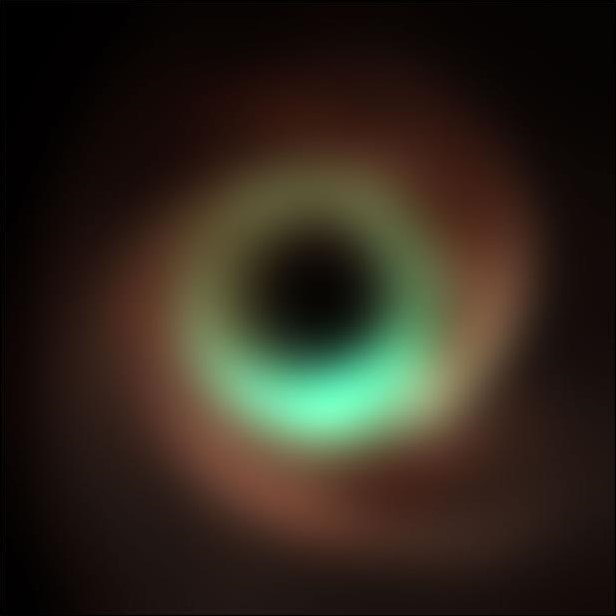The Event Horizon Telescope (EHT) Collaboration, working together with the Atacama Large Millimeter/submillimeter Array (ALMA), has conducted test observations achieving the highest-resolution ever obtained from the surface of the Earth, by detecting light from the centers of distant galaxies at a frequency of around 345 GHz, equivalent to a wavelength of 0.87 mm. The new detections were published today in The Astronomical Journal.
“This result represents a major technical and scientific breakthrough, establishing a new angular resolution record in astronomy,” said Laurent Loinard, researcher at the Institute of Radio Astronomy and Astrophysics at UNAM, Campus Morelia, and member of the EHT Collaboration. “In the near future, this will allow to construct images of the black holes in the center of our Galaxy and also M87 with a level of sharpness 50% higher than what the Event Horizon Telescope has been able to do so far.”
The EHT creates a virtual Earth-sized telescope by linking together multiple radio dishes across the globe, using a technique called very-long-baseline interferometry (VLBI). To get higher-resolution images, astronomers have two options: increase the distance between radio dishes or observe at a shorter wavelength. Since the EHT was already the size of our planet, increasing the resolution of ground-based observations required expanding its wavelength range, and that’s what the Collaboration has now done.
“With the EHT, we saw the first images of black holes by detecting radio waves at the 1.3 mm wavelength, but the bright ring we saw, formed by light bending in the black hole’s gravity, still looked blurry because we were at the absolute limits of how sharp we could make the images,” said paper co-lead Alexander Raymond, researcher at the NASA Jet Propulsion Laboratory. “At 0.87 mm, our images will be sharper and more detailed, which in turn will likely reveal new properties, both those that were previously predicted and maybe some that weren’t.”
This is the first time the VLBI technique has been successfully used at a wavelength of 0.87mm. The new experiment used some of the EHT antennas alongside ALMA to make measurements with resolution as fine as 19 microarcseconds. With the full EHT, scientists could see details as fine as 13 microarcseconds, much like observing a bottle cap on the Moon from Earth.
Paper co-lead Sheperd “Shep” Doeleman, an astrophysicist at the Harvard & Smithsonian Center for Astrophysics and the Founding Director of the EHT, said of the major breakthrough, “Consider the burst of extra detail you get going from black and white photos to color. This new ‘color vision’ allows us to tease apart the effects of Einstein’s gravity from the hot gas and magnetic fields that feed the black holes and launch powerful jets that stream over galactic distances.” With this in mind, he added that the Collaboration is excited to reimage M87* and Sgr A* at both 1.3 mm and 0.87 mm, and move from detecting black hole ‘shadows’ to more precisely measuring their sizes and shapes, which can help to estimate a black hole’s spin and orientation on the sky.
This achievement also provides another stepping stone on the path to creating high-fidelity movies of the event horizon environment surrounding black holes, which will rely on upgrades to the existing global array. The planned next-generation EHT (ngEHT) project will add new antennas to the EHT in optimized geographical locations and enhance existing stations by upgrading them all to work at multiple wavelengths between 3 mm and 0.87 mm at the same time. As a result of these and other upgrades, the global array is expected to increase the amount of sharp, clear data EHT has for imaging by a factor of 10, enabling scientists to not only produce more detailed and sensitive images, but movies starring these violent cosmic beasts.

Multi-frequency Simulated Image of M87*. This simulated image shows how M87* is seen by the Event Horizon Telescope at 86 GHz (red), 230 GHz (green), and 345 GHz (blue). The higher the frequency, the sharper the image becomes, revealing structure, size, and shape that was previously less discernible. Credit: EHT, L. Matthews, D. Pesce.
Research paper
First Very Long Baseline Interferometry Detections at 870 μm
A. W. Raymond et al (2024)
The Astronomical Journal, 168, 130
https://doi.org/10.3847/1538-3881/ad5bdb
Mexico in the Event Horizon Telescope
The Alfonso Serrano Large Millimeter Telescope, located on the Sierra Negra volcano in the state of Puebla, is one of the radio wave observatories that participates in the Event Horizon Telescope. It is maintained by the National Institute of Astrophysics, Optics and Electronics (INAOE) and the University of Massachusetts. The Mexican community that participates in the EHT collaboration includes at least 10 people in foreign or national institutions, such as the IRyA and IA, both at UNAM, and the INAOE.
More Information about the EHT
The EHT collaboration involves more than 300 researchers from Africa, Asia, Europe, and North and South America. The international collaboration is working to capture the most detailed black hole images ever obtained by creating a virtual Earth-sized telescope. Supported by considerable international investment, the EHT links existing telescopes using novel systems — creating a fundamentally new instrument with the highest angular resolving power that has yet been achieved.
The individual telescopes involved in the EHT in April 2017, when the observations were conducted, were: the Atacama Large Millimeter/submillimeter Array (ALMA), the Atacama Pathfinder EXperiment (APEX), the Institut de Radioastronomie Millimetrique (IRAM) 30-meter Telescope, the James Clerk Maxwell Telescope (JCMT), the Large Millimeter Telescope Alfonso Serrano (LMT), the Submillimeter Array (SMA), the UArizona Submillimeter Telescope (SMT), the South Pole Telescope (SPT). Since then, the EHT has added the Greenland Telescope (GLT), the IRAM NOrthern Extended Millimeter Array (NOEMA) and the UArizona 12-meter Telescope on Kitt Peak to its network.
The EHT consortium consists of 13 stakeholder institutes: the Academia Sinica Institute of Astronomy and Astrophysics, the University of Arizona, the University of Chicago, the East Asian Observatory, Goethe-Universitaet Frankfurt, Institut de Radioastronomie Millimétrique, Large Millimeter Telescope, Max Planck Institute for Radio Astronomy, MIT Haystack Observatory, National Astronomical Observatory of Japan, Perimeter Institute for Theoretical Physics, Radboud University and the Smithsonian Astrophysical Observatory.
EHT webpage: eventhorizontelescope.org
EHT Collaboration contact at IRyA
Laurent Loinard
Instituto de Radioastronomía y Astrofísica, UNAM
Morelia, México
Media contact:
Dr. René A. Ortega Minakata
Outreach and Science Communication
IRyA UNAM Campus Morelia
Text: EHT Collaboration, adapted by IRyA UNAM




